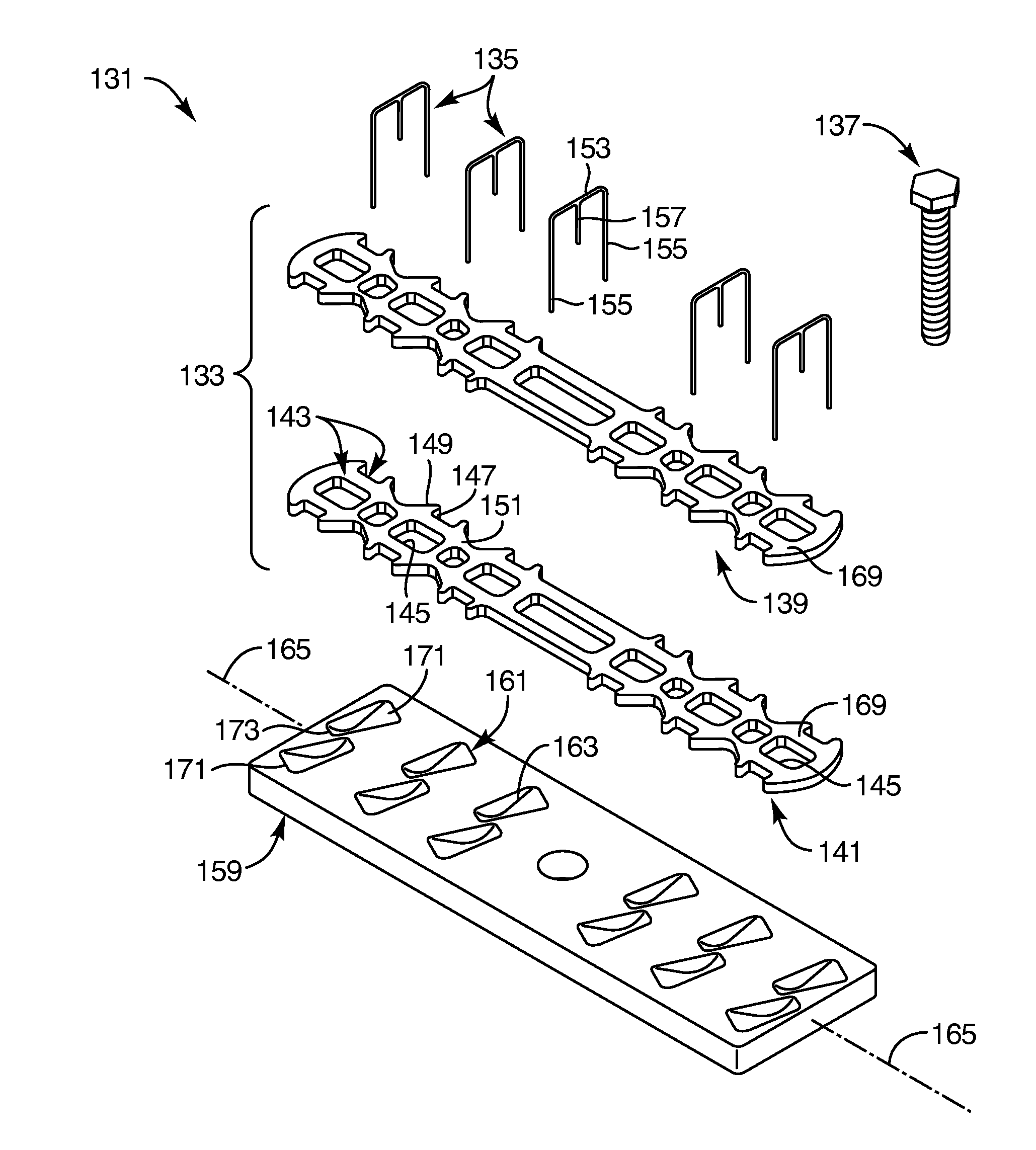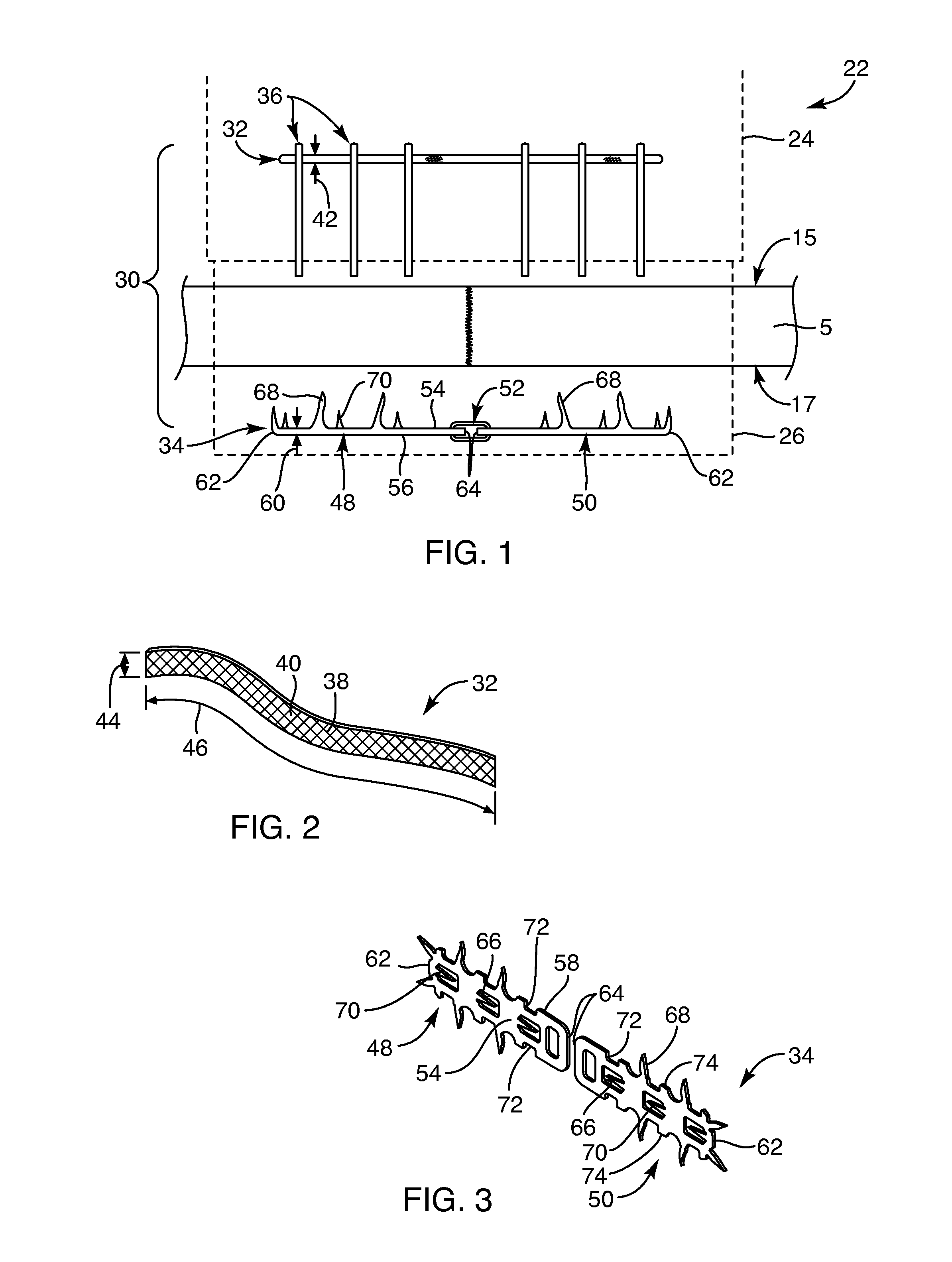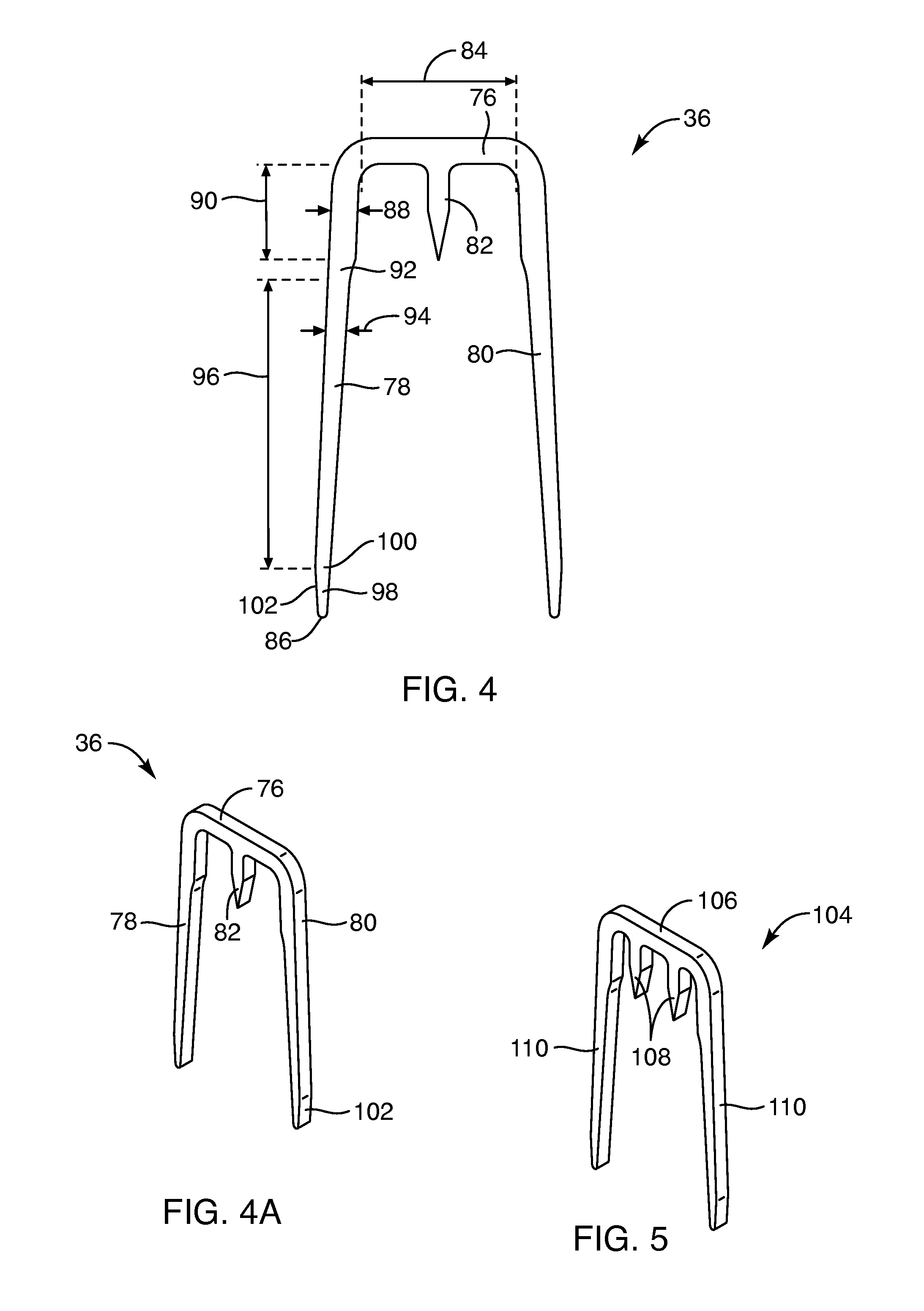Devices, systems, and methods for repairing soft tissue and attaching soft tissue to bone
a soft tissue and bone technology, applied in the field of soft tissue repair sites, can solve the problems of affecting the repair outcome, affecting the repair quality, and affecting the repair effect,
- Summary
- Abstract
- Description
- Claims
- Application Information
AI Technical Summary
Benefits of technology
Problems solved by technology
Method used
Image
Examples
Embodiment Construction
[0094]Various embodiments are disclosed herein of a soft tissue repair device. Such repair device may be sized and configured to approximate and fuse, for example, a lacerated tendon. The various embodiments may provide structure that maintains two ends of a lacerated tendon in an abutting relationship, without gapping, while allowing the tendon adjacent the tendon ends and along the length of the repair device to provide controlled elongation of the tendon. In this manner, the repair device of the present invention may provide the proper healing required for fusing the tendon ends while still providing movement of the tendon to minimize atrophy and potential adhesions.
[0095]With reference to FIG. 1, one embodiment of a repair device 30, shown in a pre-deployed state, is provided. The repair device 30 may include a flexible member 32 and one or more rigid members 24 that may be coupled together with anchors 36. The flexible member 32 may be positioned relative to separate and discre...
PUM
| Property | Measurement | Unit |
|---|---|---|
| Angle | aaaaa | aaaaa |
| Angle | aaaaa | aaaaa |
| Length | aaaaa | aaaaa |
Abstract
Description
Claims
Application Information
 Login to View More
Login to View More - R&D
- Intellectual Property
- Life Sciences
- Materials
- Tech Scout
- Unparalleled Data Quality
- Higher Quality Content
- 60% Fewer Hallucinations
Browse by: Latest US Patents, China's latest patents, Technical Efficacy Thesaurus, Application Domain, Technology Topic, Popular Technical Reports.
© 2025 PatSnap. All rights reserved.Legal|Privacy policy|Modern Slavery Act Transparency Statement|Sitemap|About US| Contact US: help@patsnap.com



